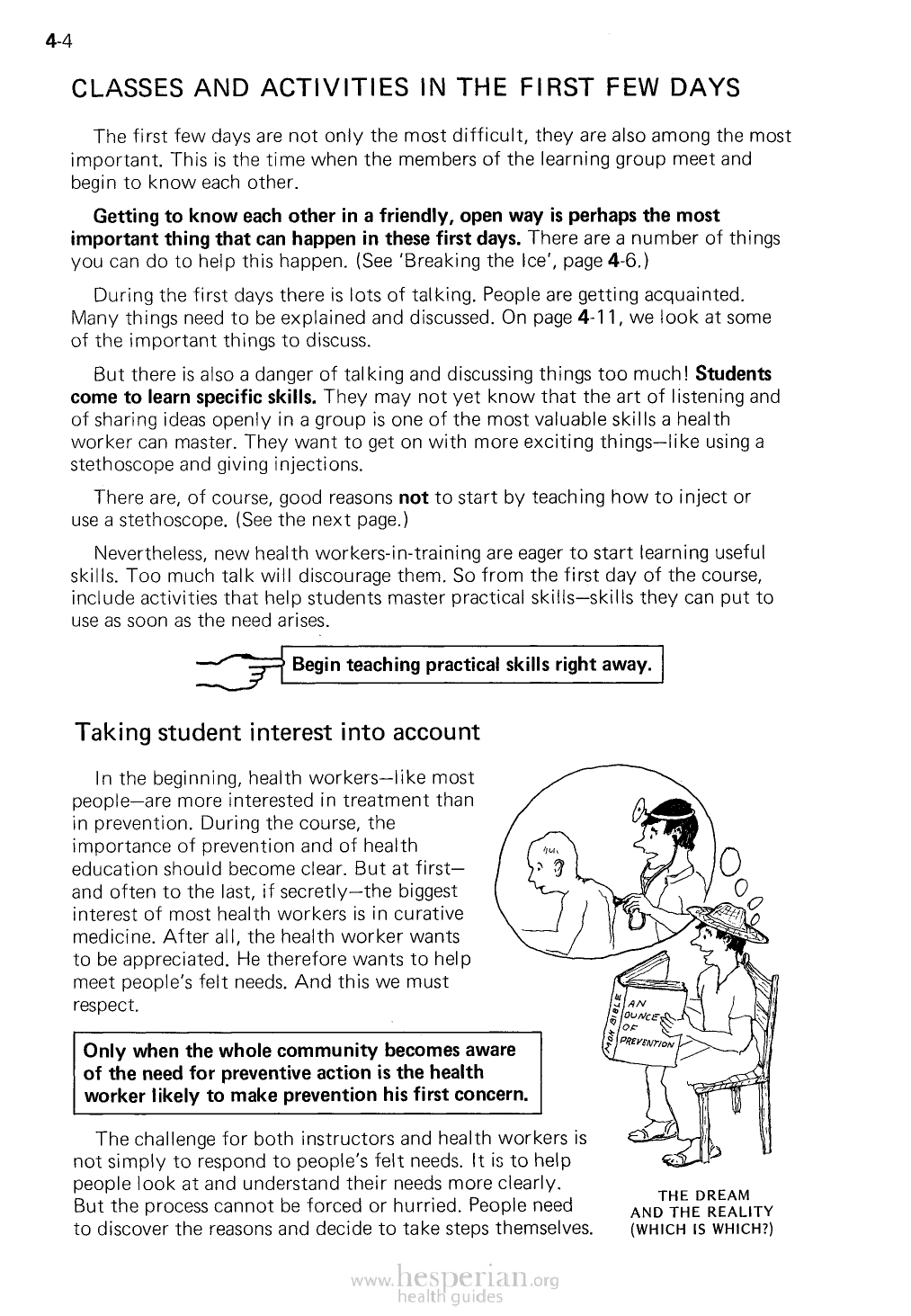
4-4
CLASSES AND ACTIVITIES IN THE FIRST FEW DAYS
The first few days are not only the most difficult, they are also among the most
important. This is the time when the members of the learning group meet and
begin to know each other.
Getting to know each other in a friendly, open way is perhaps the most
important thing that can happen in these first days. There are a number of
things you can do to help this happen. (See ‘Breaking the Ice’, page 4-6.)
During the first days there is lots of talking. People are getting acquainted. Many
things need to be explained and discussed. On page 4-11, we look at some of the
important things to discuss.
But there is also a danger of talking and discussing things too much! Students
come to learn specific skills. They may not yet know that the art of listening
and of sharing ideas openly in a group is one of the most valuable skills a health
worker can master. They want to get on with more exciting things—like using a
stethoscope and giving injections.
There are, of course, good reasons not to start by teaching how to inject or use a
stethoscope. (See the next page.)
Nevertheless, new health workers-in-training are eager to start learning useful
skills. Too much talk will discourage them. So from the first day of the course,
include activities that help students master practical skills—skills they can put to
use as soon as the need arises.
Begin teaching practical skills right away.
Taking student interest into account
In the beginning, health workers—like most
people—are more interested in treatment than
in prevention. During the course, the importance
of prevention and of health education should
become clear. But at first— and often to the
last, if secretly—the biggest interest of most
health workers is in curative medicine. After all,
the health worker wants to be appreciated. He
therefore wants to help meet people’s felt needs.
And this we must respect.
Only when the whole community becomes aware
of the need for preventive action is the health
worker likely to make prevention his first concern.
The challenge for both instructors and health workers is not
simply to respond to people’s felt needs. It is to help people
look at and understand their needs more clearly. But the
process cannot be forced or hurried. People need to discover
the reasons and decide to take steps themselves.
THE DREAM AND THE
REALITY (WHICH IS
WHICH?)